Mulatto is a racial classification to refer to people of mixed African and European ancestry. Its use is considered outdated and offensive in several languages, including English and Dutch, whereas in languages such as Italian, Spanish and Portuguese is not, and can even be a source of pride. A mulatta is a female mulatto.

Slavery in the colonial history of the United States refers to the institution of slavery as it existed in the European colonies which eventually became part of the United States. In these colonies, slavery developed due to a combination of factors, primarily the labour demands for establishing and maintaining European colonies, which had resulted in the Atlantic slave trade. Slavery existed in every European colony in the Americas during the early modern period, and both Africans and indigenous peoples were victims of enslavement by European colonizers during the era.
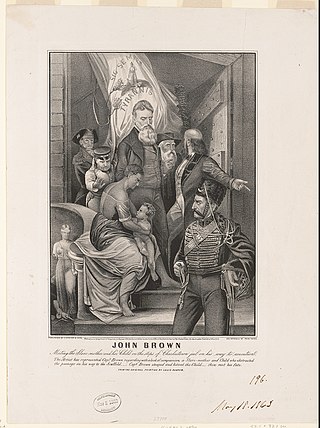
"Children of the plantation" is a euphemism used to refer to people with ancestry tracing back to the time of slavery in the United States in which the offspring was born to black African female slaves in the context of the trans-Atlantic slave trade and European men, usually the slave's owner, one of the owner's relatives, or the plantation overseer. These children were often considered to be the property of the slave owner and were often subjected to the same treatment as other slaves on the plantation. Many of these children were born into slavery and had no legal rights, as they were not recognized as the legitimate children of their fathers. This practice was a form of sexual abuse and exploitation, as the European men who fathered these children often used their power and authority to force themselves upon the black females who were under their control. The trauma and suffering that these children and their mothers experienced as a result of this practice continue to have a lasting impact on the African American community.
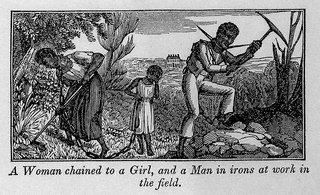
African American history started with the arrival Africans to North America in the 16th and 17th centuries. Former Spanish slaves who had been freed by Francis Drake arrived aboard the Golden Hind at New Albion in California in 1579. The European colonization of the Americas, and the resulting transatlantic slave trade, led to a large-scale transportation of enslaved Africans across the Atlantic; of the roughly 10–12 million Africans who were sold by the Barbary slave trade, either to European slavery or to servitude in the Americas, approximately 388,000 landed in North America. After arriving in various European colonies in North America, the enslaved Africans were sold to white colonists, primarily to work on cash crop plantations. A group of enslaved Africans arrived in the English colony of Virginia in 1619, marking the beginning of slavery in the colonial history of the United States; by 1776, roughly 20% of the British North American population was of African descent, both free and enslaved.

Clotel; or, The President's Daughter: A Narrative of Slave Life in the United States is an 1853 novel by United States author and playwright William Wells Brown about Clotel and her sister, fictional slave daughters of Thomas Jefferson. Brown, who escaped from slavery in 1834 at the age of 20, published the book in London. He was staying after a lecture tour to evade possible recapture due to the 1850 Fugitive Slave Act. Set in the early nineteenth century, it is considered the first novel published by an African American and is set in the United States. Three additional versions were published through 1867.

James William Loewen was an American sociologist, historian, and author. He was best known for his 1995 book, Lies My Teacher Told Me: Everything Your American History Textbook Got Wrong.

Partus sequitur ventrem was a legal doctrine passed in colonial Virginia in 1662 and other English crown colonies in the Americas which defined the legal status of children born there; the doctrine mandated that children of slave mothers would inherit the legal status of their mothers. As such, children of enslaved women would be born into slavery. This institutionalized the white male rape of black women in the colonies, refiguring Black women as not only free labor but also unlimited capital, who could both produce and reproduce for the benefit of the patriarch. The legal doctrine of partus sequitur ventrem was derived from Roman civil law, specifically the portions concerning slavery and personal property (chattels), as well as the common law of personal property.

Lies My Teacher Told Me: Everything Your American History Textbook Got Wrong is a 1995 book by James W. Loewen that critically examines twelve popular American high school history textbooks. In the book, Loewen concludes that the textbook authors propagate false, Eurocentric, and mythologized views of American history. In addition to his critique of the dominant historical themes presented in high school textbooks, Loewen presents themes from history that he believes should be presented in high school textbooks.

The history of slavery spans many cultures, nationalities, and religions from ancient times to the present day. Likewise, its victims have come from many different ethnicities and religious groups. The social, economic, and legal positions of enslaved people have differed vastly in different systems of slavery in different times and places.
The Virginia Slave Codes of 1705, were a series of laws enacted by the Colony of Virginia's House of Burgesses in 1705 regulating the interactions between slaves and citizens of the crown colony of Virginia. The enactment of the Slave Codes is considered to be the consolidation of slavery in Virginia, and served as the foundation of Virginia's slave legislation. All servants from non-Christian lands became slaves. There were forty one parts of this code each defining a different part and law surrounding the slavery in Virginia. These codes overruled the other codes in the past and any other subject covered by this act are canceled.

Slavery in Brazil began long before the first Portuguese settlement was established in 1516, with members of one tribe enslaving captured members of another. Later, colonists were heavily dependent on indigenous labor during the initial phases of settlement to maintain the subsistence economy, and natives were often captured by expeditions of bandeirantes. The importation of African slaves began midway through the 16th century, but the enslavement of indigenous peoples continued well into the 17th and 18th centuries.
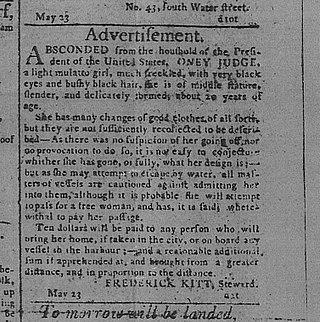
When the Dutch and Swedes established colonies in the Delaware Valley of what is now Pennsylvania, in North America, they quickly imported enslaved Africans for labor; the Dutch also transported them south from their colony of New Netherland. Enslavement was documented in this area as early as 1639. William Penn and the colonists who settled in Pennsylvania tolerated slavery. Still, the English Quakers and later German immigrants were among the first to speak out against it. Many colonial Methodists and Baptists also opposed it on religious grounds. During the Great Awakening of the late 18th century, their preachers urged slaveholders to free people their slaves. High British tariffs in the 18th century discouraged the importation of additional slaves, and encouraged the use of white indentured servants and free labor.

Life and Times of Frederick Douglass is Frederick Douglass's third autobiography, published in 1881, revised in 1892. Because of the emancipation of American slaves during and following the American Civil War, Douglass gave more details about his life as a slave and his escape from slavery in this volume than he could in his two previous autobiographies. It is the only one of Douglass's autobiographies to discuss his life during and after the Civil War, including his encounters with American presidents such as Lincoln and Garfield, his account of the ill-fated "Freedman's Bank", and his service as the United States Marshall of the District of Columbia. Fredrick Douglass shed light on what life was like as an enslaved person. Although it is the least studied and analyzed, Life and Times of Frederick Douglass allows readers to view his life as a whole.
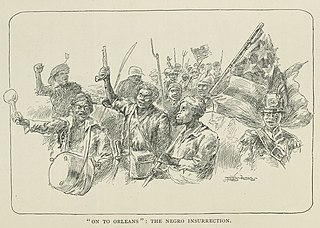
The 1811 German Coast uprising was a revolt of slaves in parts of the Territory of Orleans on January 8–10, 1811. The uprising occurred on the east bank of the Mississippi River in what is now St. John the Baptist, St. Charles and Jefferson Parishes, Louisiana. The slave insurgency was the largest in U.S. history, but the rebels killed only two White men. Confrontations with militia, combined with post-trial executions, resulted in the deaths of 95 slaves.

The treatment of slaves in the United States often included sexual abuse and rape, the denial of education, and punishments like whippings. Families were often split up by the sale of one or more members, usually never to see or hear of each other again.

Post Traumatic Slave Syndrome: America's Legacy of Enduring Injury and Healing is a 2005 theoretical work by Joy DeGruy Leary. The book argues that the experience of slavery in the United States and the continued discrimination and oppression endured by African Americans creates intergenerational psychological trauma, leading to a psychological and behavioral syndrome common among present-day African Americans, manifesting as a lack of self-esteem, persistent feelings of anger, and internalized racist beliefs. The book was first published by Uptone Press in Milwaukie, Oregon in 2005, with a later re-release by the author in 2017.

A People's History of the United States is a 1980 nonfiction book by American historian and political scientist Howard Zinn. In the book, Zinn presented what he considered to be a different side of history from the more traditional "fundamental nationalist glorification of country". Zinn portrays a side of American history that can largely be seen as the exploitation and manipulation of the majority by rigged systems that hugely favor a small aggregate of elite rulers from across the orthodox political parties.
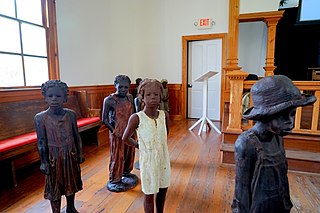
Following Robert Cavelier de La Salle establishing the French claim to the territory and the introduction of the name Louisiana, the first settlements in the southernmost portion of Louisiana were developed at present-day Biloxi (1699), Mobile (1702), Natchitoches (1714), and New Orleans (1718). Slavery was then established by European colonists.

Four Hundred Souls: A Community History of African America, 1619–2019 is a 2021 anthology of essays, commentaries, personal reflections, short stories, and poetry, compiled and edited by Ibram X. Kendi and Keisha N. Blain. Conceived and created to commemorate the four hundred years that had passed since the arrival of the first Africans in Virginia, the book concerns African-American history and collects works written by ninety Black writers. A winner or finalist of multiple awards in its print and audiobook editions, Four Hundred Souls has been widely praised by reviewers for its prose and historical content.

















